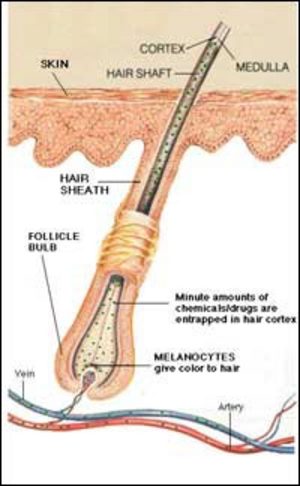It’s strange to think today how quickly and easily our society has been infiltrated with electronics devices. Laptops, iPods, robotic pets, and millions of other gizmos populate store shelves, and in turn, our homes. The electronics industry does big business and they make a killing off the fact that the average Joe doesn’t know where to begin when it comes to creating their own gadgets. This How-To-Guide is meant to provide you with tips and tricks on how to make your own electronics. For a little background information on electronics and electronic parts, consult wikipedia.com. There is nothing this site doesn’t have.
Safety
As a beginner it is important to know about safe practices when it comes to electricity.
1) Electricity CAN KILL you! It takes around .5 amps across your heart to cause palpitations. Pay close attention to what you are doing at all times. Complacency is not your best friend when it comes to electricity.
2) Electricity and water don’t mix. Always keep your work area free of liquids.
3) When working with electronics there are a lot of tools that can get very hot. Be weary of touching soldering irons or heat guns on their respective heated locations while and after using them.
Workstation
OK, on to the workstation. I have a large area available when I tinker with electronics but this isn’t necessary. Usually a desktop surface will suffice. There are a few crucial items to have on your desktop.
1) A power supply. Power supplies can be purchased for around $100 dollars or more but I would recommend making your own from a computer power supply. Think of it as your first project. Here is a link to a great How-To guide for making a power supply from a salvaged PC power supply.
You may want to consult the rest of the guide before starting the power supply project.
2) Having an AC outlet close by will keep you from having to run long extension cords.
3) I keep a tackle box with all of my components and tools for easy access. We’ll go into detail on what to keep in the tackle box next. You can pick one up at Wal-Mart for pretty cheap.
Tools
Here is a list of tools to keep in your bench tackle box. You may find you need others as the complexity of your project increase.
1) Soldering Iron. A soldering iron to an electronics enthusiast is like a sword to a soldier. There are many brands out there with a huge price range (20-150 dollars) but an el-cheapo is what I use. You can pick these up at Radioshack, hardware stores, or if you want to be a pro, browse one of the websites listed further down in the article and pick one up. It is also a good idea to have a wet sponge to clean the tip of the soldering iron.
2) Diagonal cutters, wire strippers, needle-nose pliers, a drill with various size bits.
3) Multi-meter. Just like the soldering irons these meters can be very expensive. I picked a simple one up from Allelectronics.com for around $10. A multi-meter is a great tool for diagnosing problems with your circuit or determining resistor values.
4) The last handing item is a bread board. A breadboard is a block where you can plug components in and wire a circuit up without soldering and test to make sure the circuit will work as designed. It’ll save you a lot of time and frustration so pick one up from Allelectronics.com for $10-$15.
5) The last thing you’ll need in your kit is a roll of solder and some heat shrink. The solder is used for soldering your components and the heat shrink is used to go over various solder joints that need protection.
Projects
After everything is set up you can start creating just about anything. I recommend starting small and working your way up to more advanced projects.
The power supply project is a good place to begin. Here is the link again.
If you are an audiophile you could try to make a simple guitar amp. The internet is riddled with schematics and How-To guides to making guitar amps and effect pedals. If you take a look at IC chip datasheets, they will sometimes have recommended circuits for the particular chip.
When you are confident enough to try something more difficult then I would recommend making your own Mill to route out any PCB bards for the circuits you design. Here is a great How-To guide on that.
References
Check out these sites for cheap parts and supplies and other electronic tips.
www.Allelectronics.com – parts and supplies
www.digikey.com – parts and supplies
www.mouser.com – parts and supplies
www.pcbexpress.com – PCB board manufacturing
www.wikipedia.com – information on pretty much anything


